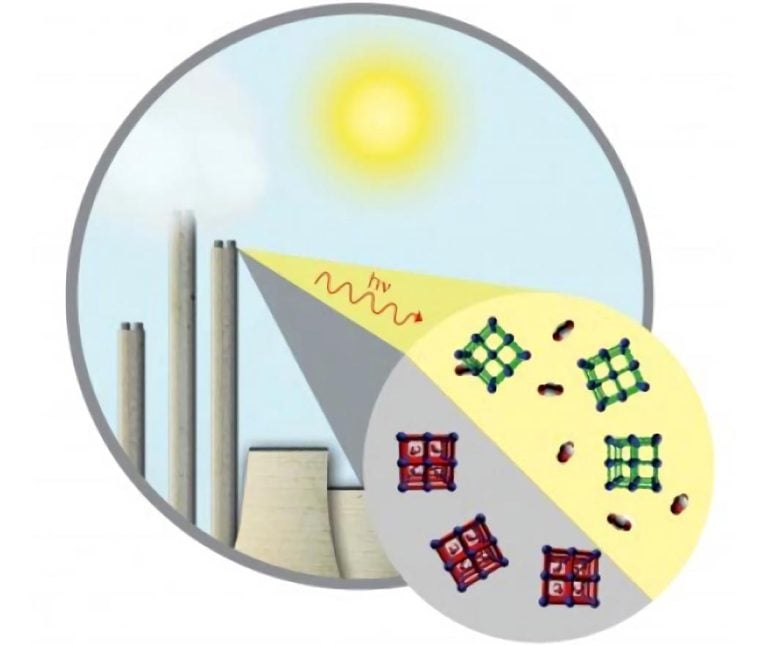
A new material powered by sunlight could help to drastically cut carbon emissions. Credit: Monash University
Researchers from Monash University and CSIRO have discovered a photosensitive metal-organic framework (MOF) that utilizes sunlight to release large amounts of stored carbon.
Emissions from coal power stations could be drastically reduced by a new, energy-efficient material that adsorbs large amounts of carbon dioxide, then releases it when exposed to sunlight.
In a study published on February 10 in Angewandte Chemie, Monash University and CSIRO scientists for the first time discovered a photosensitive metal-organic framework (MOF) – a class of materials known for their exceptional capacity to store gases. This has created a powerful and cost-effective new tool to capture and store, or potentially recycle, carbon dioxide.
By utilizing sunlight to release the stored carbon, the new material overcomes the problems of expense and inefficiency associated with current, energy-intensive methods of carbon capture. Current technologies use liquid capture materials that are then heated in a prolonged process to release the carbon dioxide for storage.
Associate Professor Bradley Ladewig of the Monash Department of Chemical Engineering said the MOF was an exciting development in emissions reduction technology.
“For the first time, this has opened up the opportunity to design carbon capture systems that use sunlight to trigger the release of carbon dioxide,” Associate Professor Ladewig said.
“This is a step-change in carbon capture technologies.”
A promising and novel class of materials, MOFs are clusters of metal atoms connected by organic molecules. Due to their extremely high internal surface area – that could cover an entire football field in a single gram – they can store large volumes of gas.
PhD student Richelle Lyndon and lead author of the paper said the technology, known as dynamic photo-switching was accomplished using light-sensitive azobenzene molecules.
“The MOF can release the adsorbed carbon dioxide when irradiated with light found in sunlight, just like wringing out a sponge,” Ms. Lyndon said.
“The MOF we discovered had a particular affinity for carbon dioxide. However, the light-responsive molecules could potentially be combined with other MOFs, making the capture and release technology appropriate for other gases.”
The researchers, led by Professor Matthew Hill of CSIRO, will now optimize the material to increase the efficiency of carbon dioxide to levels suitable for an industrial environment.
Reference: “Dynamic Photo-Switching in Metal–Organic Frameworks as a Route to Low-Energy Carbon Dioxide Capture and Release” by Richelle Lyndon, Dr. Kristina Konstas, Prof. Bradley P. Ladewig, Dr. Peter D. Southon, Prof Cameron J. Kepert and Dr. Matthew R. Hill, 10 February 2013, Angewandte Chemie.
DOI: 10.1002/anie.201206359
The study was supported by the Science and Industry Endowment Fund.









Fascinating work but I would like to understand why we would want to release CO2 from the MOFs using sunlight? Presumably we would not want to release it to the atmosphere as this would defeat the purpose of capturing it.